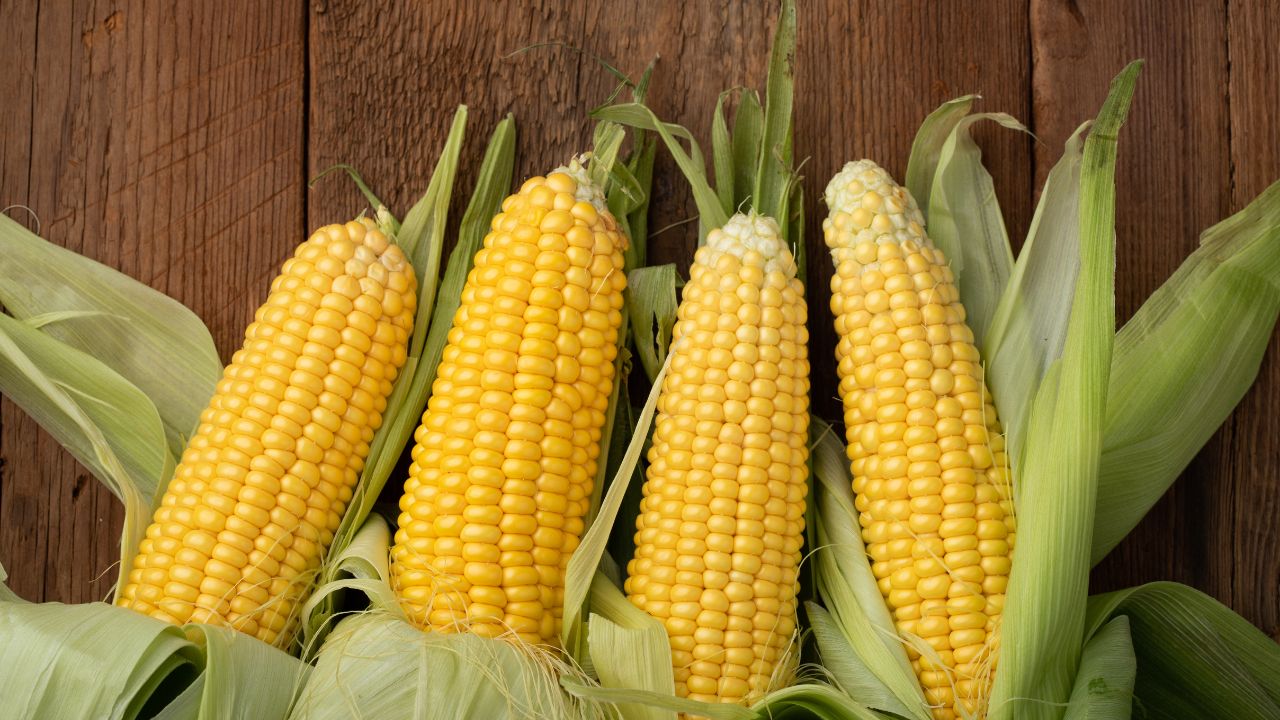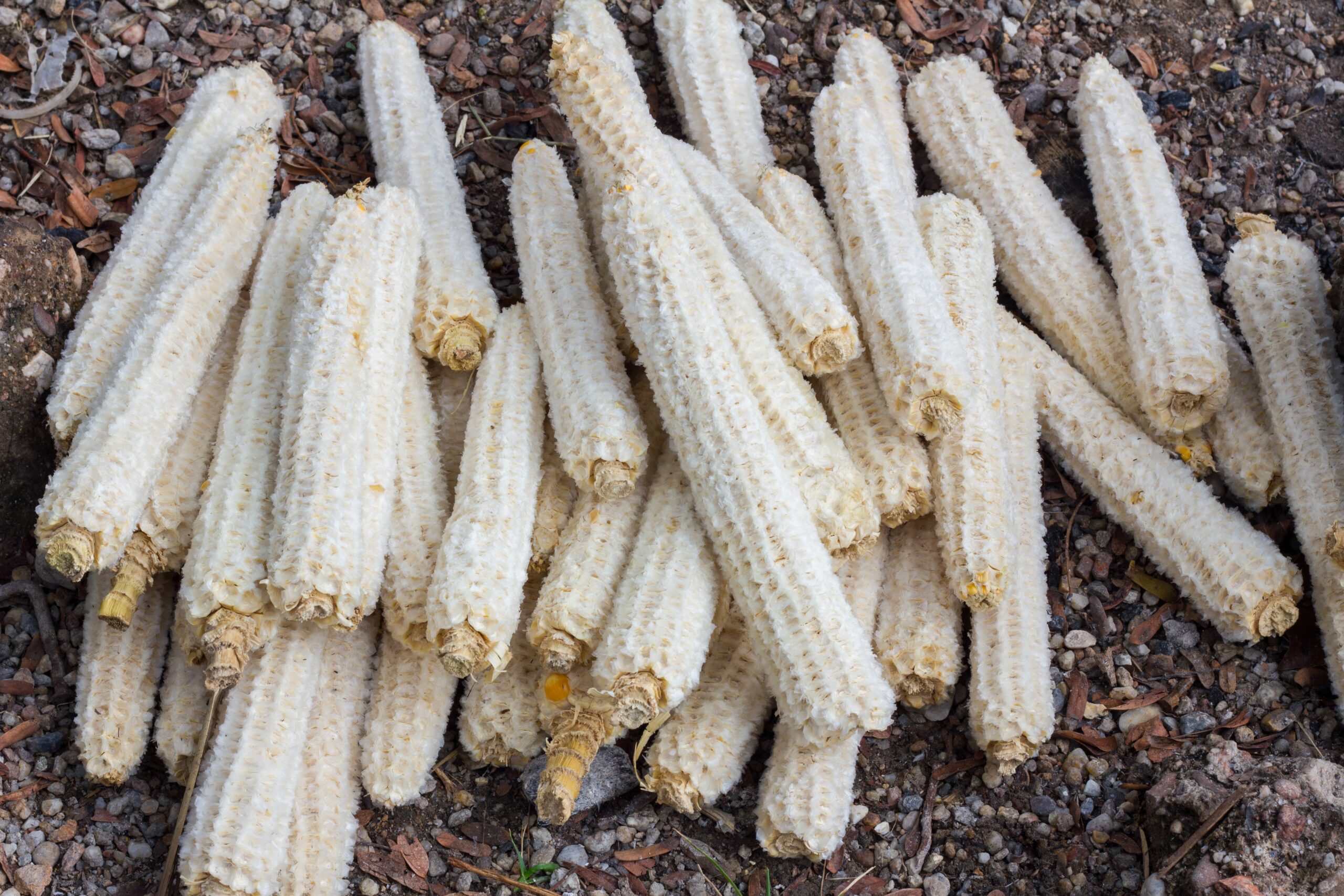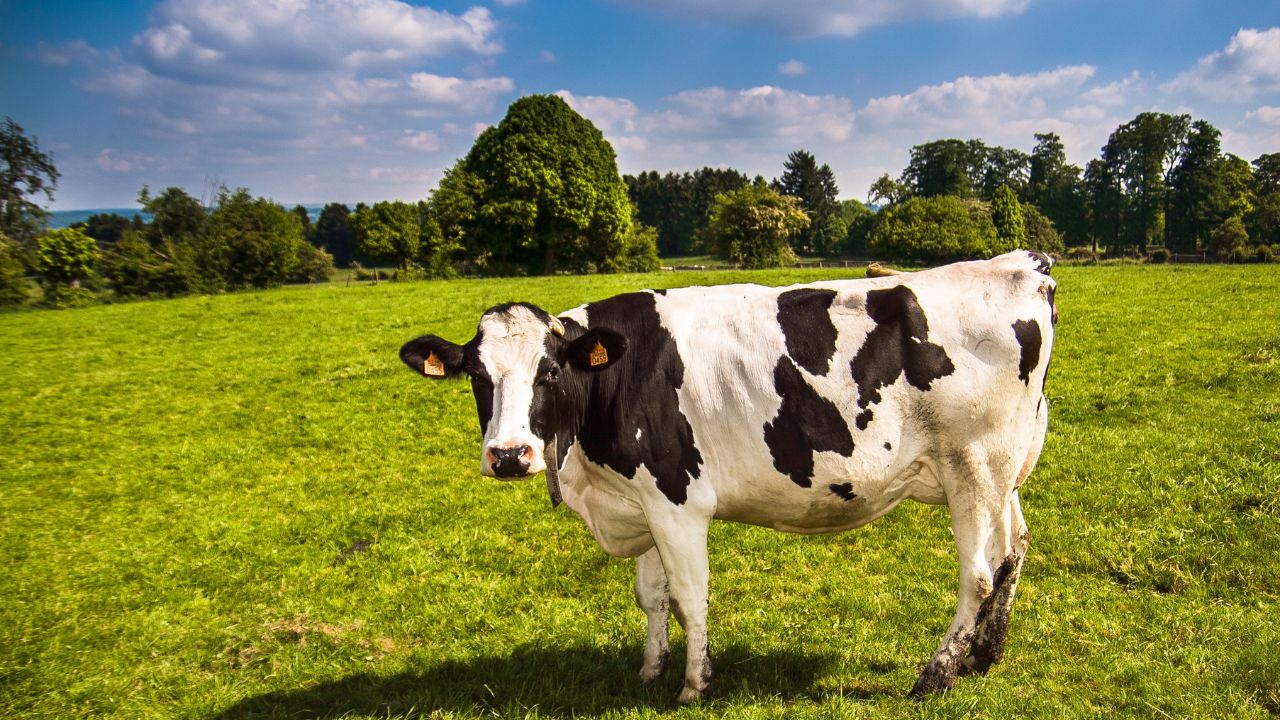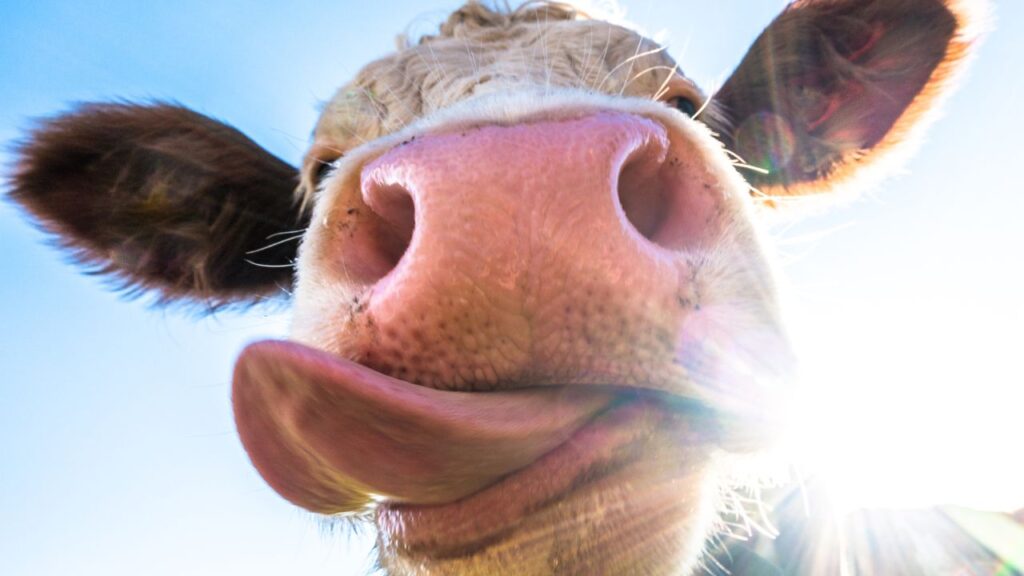Cows are ruminants, animals designed to digest a variety of forages as part of their diet. Corn, a staple in many livestock feeds, offers a high energy content and is palatable for cattle. However, feeding cattle with corn cobs, which differ from the grain itself, requires careful consideration. Corn cobs are the central core of the maize ear left after the kernels are removed, and they contain a different nutrient profile compared to corn grain.
Feeding practices for cattle often focus on the use of grains, forages, and supplements to ensure a balanced diet and maintain animal health. The inclusion of corn cobs in a cow’s diet introduces questions about the digestibility, potential benefits, and risks associated with this type of feed. Nutritional management is crucial in cattle rearing, and determining the suitability of corn cobs as feed involves an assessment of their fiber content, digestibility, and the overall impact on the cow’s digestive system.
Livestock producers and animal nutritionists analyze the role of various feed components to optimize health and productivity in cattle herds. With corn cobs being readily available as a byproduct of corn harvest, their use as cattle feed could present economical advantages if proven safe and nutritious. It is essential to understand how these agricultural byproducts can fit into a cow’s diet without compromising their well-being and the quality of the resulting dairy or beef products.
Nutritional Value of Corn Cobs for Cows
Evaluating the nutritional value of corn cobs for cattle is pivotal for understanding their suitability as a fodder component. Corn cobs primarily offer fiber and some energy but are limited in protein and certain nutrients.
Energy Content
Corn cobs have a moderate energy value due to their starch content. They provide a source of carbohydrates that cows can convert into energy, although this energy is less readily available than that from the actual corn kernels.
| Nutrient | Content in Corn Cobs |
|---|---|
| Carbohydrates | Moderate |
| Readily Available Energy | Lower than Corn Kernels |
Fiber and Digestibility
The fiber in corn cobs is comprised largely of indigestible materials, making them a low-digestibility feedstuff. Incorporating corn cobs into a cow’s diet can aid in rumen stimulation due to their fibrous nature.
| Component | Description |
|---|---|
| Fiber Content | High |
| Digestibility | Low |
Protein Levels
Corn cobs possess minimal protein content, necessitating the addition of a protein supplement to maintain a balanced diet for cattle.
| Component | Description |
|---|---|
| Protein Content | Low |
| Supplementary Needs | Often Required |

Vitamins and Minerals
Vitamins and minerals in corn cobs are present, but in quantities not sufficient to meet a cow’s nutritional needs. Supplementary sources are recommended for a well-rounded diet.
| Nutrient | Content in Corn Cobs |
|---|---|
| Vitamins | Minimal |
| Minerals | Insufficient |
Benefits of Feeding Corn Cobs to Cows
Feeding corn cobs to cows can offer farmers economic and nutritional advantages. These benefits support both cost-saving measures and healthful supplementation in bovine diets.

Cost-Effectiveness
Feeding corn cobs to cows is a cost-effective strategy for farmers. Corn cobs are often a by-product of corn harvests, and utilizing them as feed can reduce the need to purchase additional, more expensive feeds. By integrating corn cobs into cows’ diets, a farmer can lower feed costs significantly.
- Reduced feed costs: Cheaper than some alternative feeds.
- Utilization of by-products: Saves on waste and purchase of new feed.
Waste Reduction
Incorporating corn cobs into the diet of cows encourages waste reduction. Instead of discarding corn cobs after the kernels are removed, they can be repurposed, thereby minimizing agricultural waste.
- Recycling agricultural by-products: Less disposal required.
- Sustainable farming practices: Contributes to a circular economy in agriculture.
Dietary Supplementation
Corn cobs can act as a dietary supplement for cows, providing roughage and aiding in digestion. They contain nutrients and fiber that can be beneficial when properly integrated with other feed components.
- Digestive health: High in fiber, which helps in digestion.
- Nutrient composition: Source of carbohydrates and trace minerals.
Risks and Considerations
While corn cobs can be a dietary component for cows, certain risks and considerations should be taken into account to ensure animal health and prevent complications.
Choking Hazards
Corn cobs pose a choking hazard to cows, particularly if eaten whole or in large chunks. Cows may struggle to break down large pieces with their chewing mechanism, which can lead to obstruction of the esophagus.
Digestive Blockages
Digestive blockages can occur if corn cobs are not properly digested. The fibrous nature of the cob might accumulate within the digestive tract, leading to impaction. This can cause discomfort, reduced appetite, and can be severe enough to require veterinary intervention.
Mycotoxin Contamination
Corn cobs can harbor mycotoxins, harmful compounds produced by certain molds. Consumption of contaminated cobs can lead to:
- Health issues: Serious health problems in cows including liver damage, impaired immune response, and reproduction issues.
- Milk contamination: If dairy cows are affected, mycotoxins can pass into the milk, posing a risk to both the animal and consumers.

Feeding Methods and Practices
When incorporating corn cobs into a cow’s diet, it is crucial to practice correct feeding methods to ensure nutrition and safety.
Grinding or Processing Corn Cobs
Corn cobs can be tough and challenging for cows to digest if fed whole. To aid in digestion, it is advisable to grind or process the corn cobs. This involves breaking them down into smaller, more manageable pieces, which can then be mixed with other feed components to provide a balanced diet.
Incorporating with Other Feeds
Cows benefit from a varied diet that includes a mix of forages, grains, and proteins. When adding ground corn cobs to their diet, they should be combined with other feeds to maintain nutritional balance. This can include:
- Forages: such as hay or silage, to add fiber
- Grains: like corn or wheat, for additional energy
- Proteins: from sources like soybean meal, for growth and milk production
Monitoring Intake Quantities
It’s important to monitor the amount of ground corn cobs in a cow’s diet. Overfeeding corn cobs can lead to digestive upsets or nutritional imbalances. Recommended quantities should be determined based on the cow’s:
- Weight
- Age
- Production Stage (e.g., lactating, dry)
- Overall Health
Maintaining proper records of feed intake can prevent overfeeding and ensure that each cow receives an appropriate diet.
Impact on Milk Production
Corn cobs can affect both the quantity and quality of milk produced by cows. Understanding these effects is crucial for optimal dairy management.
Milk Yield
When cows consume corn cobs, there can be a variation in their milk output due to the energy content in the cobs. Corn cobs are considered a source of fiber but have less energy compared to the corn grain itself. They are sometimes included in the diet as a roughage source.
- Energy Levels: Corn cobs have lower caloric content; could potentially lead to a lower milk yield if not supplemented properly.
- Digestibility: Less digestibility than corn grains; may require additional feed to maintain milk production levels.
Milk Composition
The components of milk, such as fat and protein content, can be influenced by the cow’s diet, including the inclusion of corn cobs.
- Fat Content: The fat percentage of milk might decrease if corn cobs are not properly balanced with other energy sources.
- Protein Level: Protein levels can also be affected by the overall digestibility and nutritional balance of the diet including corn cobs.
- Summary Table:
Component Effect of Corn Cobs on Milk Milk Yield Potentially lower due to less energy Milk Fat Possible decrease in fat percentage Milk Protein Could be affected by digestibility
Environmental Implications
Introducing corn cobs into a cow’s diet carries specific environmental repercussions, primarily in terms of farming sustainability and waste management processes.
Sustainability of Feeding Corn Cobs
Corn cobs are a byproduct of corn production, which represents a significant agricultural activity worldwide. Utilizing corn cobs as feed:
- Reduces waste: Incorporating corn cobs into cattle feed can diminish the waste produced from corn harvests, thus contributing to a more circular agricultural economy.
- Demands evaluation: The nutritional value and digestibility of corn cobs must be weighed against alternative feed options to ensure sustainable cattle nutrition without depleting soil nutrients.
Effect on Manure Management
The addition of corn cobs to a cow’s diet affects manure composition and management:
- Manure volume: With corn cobs being less digestible than other feedstocks, they can increase the volume of manure produced.
- Nutrient content: Corn cobs may alter the nutrient makeup of manure, potentially affecting its value as fertilizer and influencing nutrient management practices on farms.
Frequently Asked Questions
Cows can eat corn in various forms, but the specifics of their diet, including the consumption of corn cobs, can have different implications for their health and nutrition.
Is it safe for cows to consume entire ears of corn including the cobs?
It is generally safe for cows to eat entire ears of corn with the cobs, although they should be introduced gradually into the diet to prevent digestive upset. Cobs provide fiber but are less digestible than other parts of the corn.
What are the nutritional impacts of feeding cracked corn versus whole corn to cattle?
Feeding cracked corn to cattle improves digestibility compared to whole corn. Cracked corn allows easier access to nutrients and energy within the kernels, which might be otherwise locked inside the harder exterior of whole kernels.
How much corn should be included in a cow’s daily diet?
The inclusion of corn in a cow’s diet should not exceed 60% of the total dry matter intake, as higher levels can lead to acidosis. The exact amount will vary based on age, weight, and milk production levels in dairy cows.
Can consuming corn cobs cause health issues in cows?
Excessive consumption of corn cobs can lead to digestive disturbances in cows. Cobs should be fed with caution as they can cause choking hazards or lead to compaction in the rumen if not properly managed.
What aspects of corn can cows eat safely, including husks and silk?
Cows can safely consume all parts of the corn plant, including husks and silks, which provide additional fiber to their diet. However, these should be given in moderation and along with other dietary components to maintain balanced nutrition.
Are there any farm animals that should not be fed corn cobs?
Some farm animals, particularly smaller ones like sheep and goats, may be more prone to choking on corn cobs and should not be fed large pieces. Additionally, animals with specific dietary needs or health concerns should be evaluated by a veterinarian before introducing corn cobs into their diet.
Becky is a fervent wildlife enthusiast and pet care expert with a diploma in canine nutrition. Her love for animals stretches beyond the domestic, embracing the wild tapestry of global fauna. With over a decade of experience in animal welfare, Becky lends her expertise to OutlandishOwl through insightful articles, captivating wildlife information, and invaluable guidance on pet nutrition. Her work embodies a deep commitment to understanding the intricate lives of animals and a passion for educating others on sustaining natural habitats. Becky's hands-on conservation efforts and her knack for translating complex dietary science into practical pet feeding tips make her an indispensable voice for creatures great and small.




